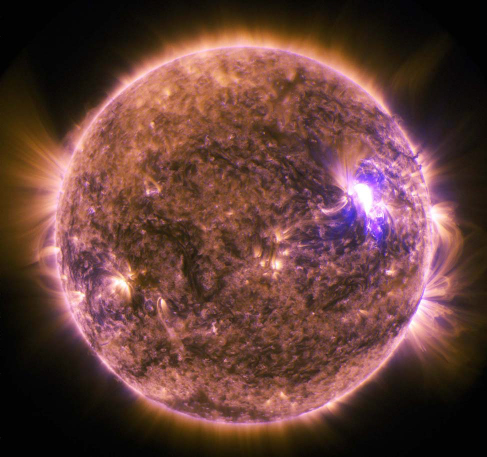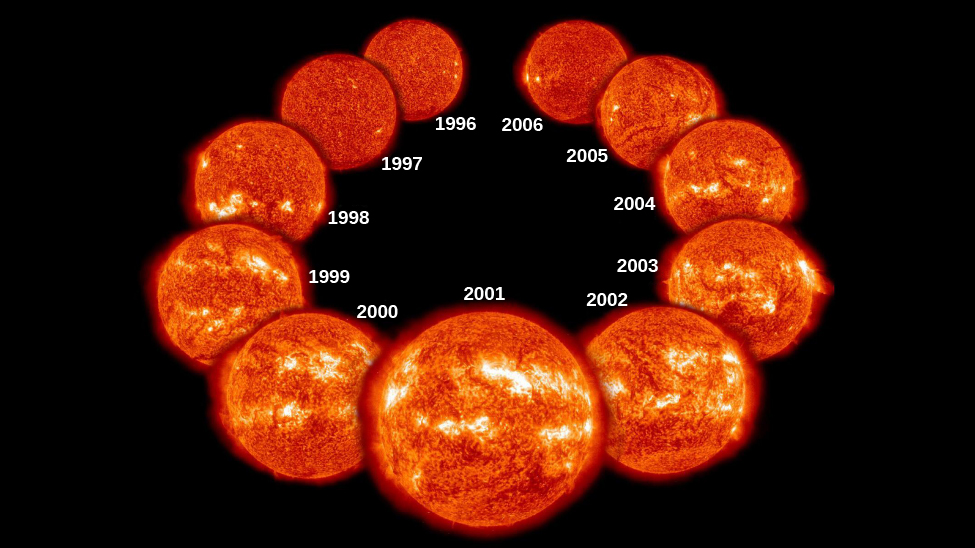| << Chapter < Page | Chapter >> Page > |
The most violent event on the surface of the Sun is a rapid eruption called a solar flare ( [link] ). A typical flare lasts for 5 to 10 minutes and releases a total amount of energy equivalent to that of perhaps a million hydrogen bombs. The largest flares last for several hours and emit enough energy to power the entire United States at its current rate of electrical consumption for 100,000 years. Near sunspot maximum, small flares occur several times per day, and major ones may occur every few weeks.

Flares, like the one shown in [link] , are often observed in the red light of hydrogen, but the visible emission is only a tiny fraction of the energy released when a solar flare explodes. At the moment of the explosion, the matter associated with the flare is heated to temperatures as high as 10 million K. At such high temperatures, a flood of X-ray and ultraviolet radiation is emitted.
Flares seem to occur when magnetic fields pointing in opposite directions release energy by interacting with and destroying each other—much as a stretched rubber band releases energy when it breaks.
What is different about flares is that their magnetic interactions cover a large volume in the solar corona and release a tremendous amount of electromagnetic radiation. In some cases, immense quantities of coronal material—mainly protons and electrons—may also be ejected at high speeds (500–1000 kilometers per second) into interplanetary space. Such a coronal mass ejection (CME) can affect Earth in a number of ways (which we will discuss in the section on space weather).

See a coronal mass ejection recorded by the Solar Dynamics Observatory.
To bring the discussion of the last two sections together, astronomers now realize that sunspots, flares, and bright regions in the chromosphere and corona tend to occur together on the Sun in time and space. That is, they all tend to have similar longitudes and latitudes, but they are located at different heights in the atmosphere. Because they all occur together, they vary with the sunspot cycle.

For example, flares are more likely to occur near sunspot maximum, and the corona is much more conspicuous at that time (see [link] ). A place on the Sun where a number of these phenomena are seen is called an active region ( [link] ). As you might deduce from our earlier discussion, active regions are always associated with strong magnetic fields.

Signs of more intense solar activity, an increase in the number of sunspots, as well as prominences, plages, solar flares, and c oronal mass ejections, all tend to occur in active regions—that is, in places on the Sun with the same latitude and longitude but at different heights in the atmosphere. Active regions vary with the solar cycle, just like sunspots do.

Notification Switch
Would you like to follow the 'Astronomy' conversation and receive update notifications?